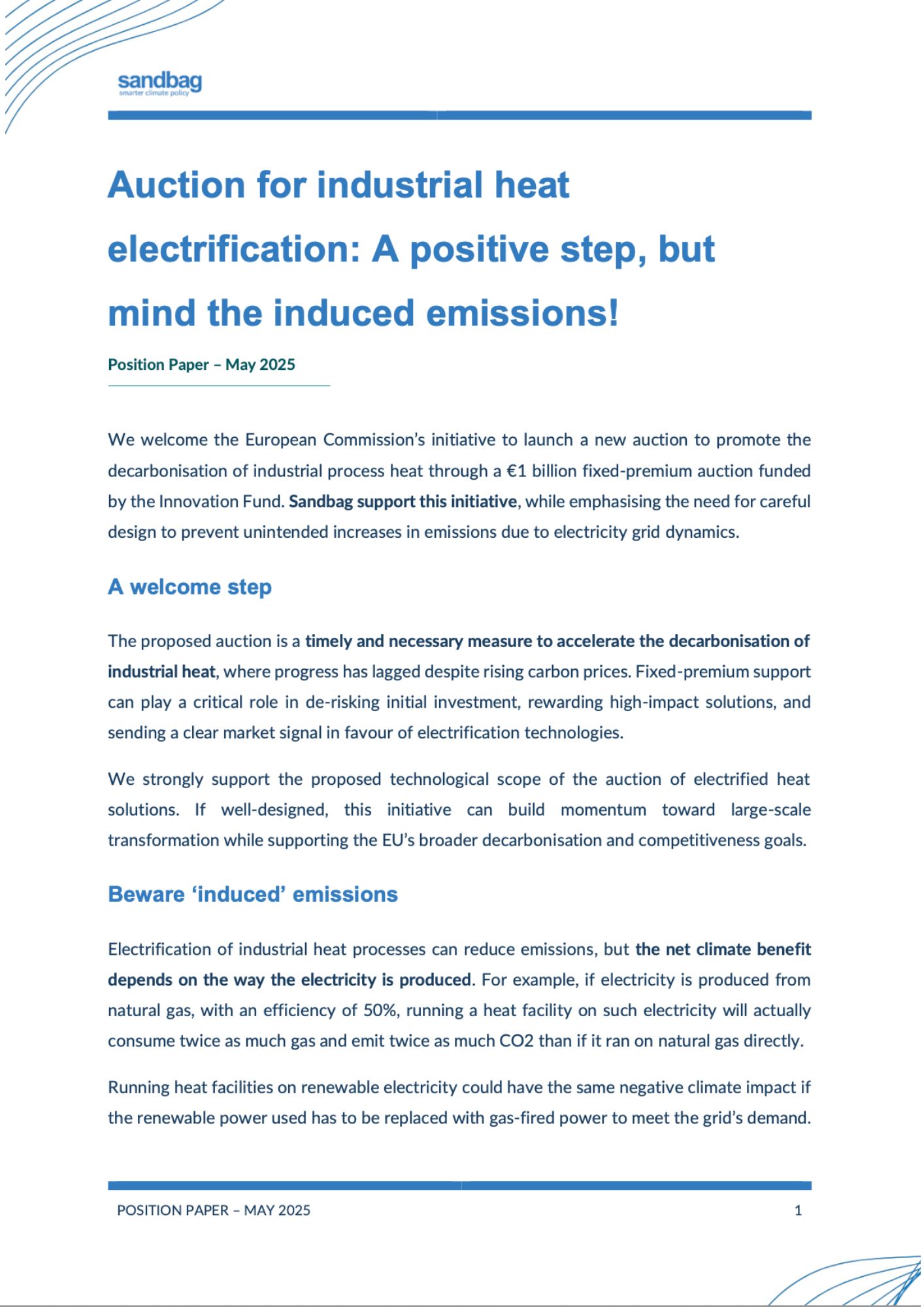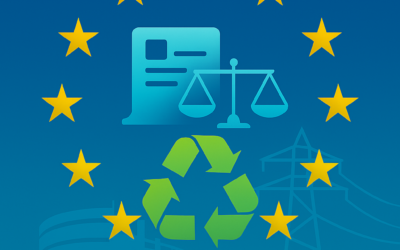Industrial heat electrification is a key strategy for decarbonising energy-intensive industries by replacing fossil-based heat. We welcome the European Commission’s initiative to launch an auction to electrify industrial heat, while emphasising the need for careful design to prevent unintended increases in emissions due to electricity grid dynamics.

About the position paper
This position paper sets out our feedback on the proposed new €1 billion fixed-premium auction under the Innovation Fund, which is aimed at accelerating the decarbonisation of industrial process heat. We welcome the proposal and suggest how the auction can be designed to maximise emission reductions from the scheme.
Key findings
Industrial heat decarbonisation needs urgent support
The auction is a timely measure to help overcome current investment barriers and signal strong support for electrification technologies.
Emissions impact depends on marginal electricity generation
The net climate benefit of electrification depends significantly on the marginal generation source supplying the grid at the time of electricity use, with risks of increased emissions if fossil fuels are supplying the marginal demand.
Efficiency-based baskets improve auction effectiveness
Dividing auction projects by energy efficiency and applying tailored safeguards prevents incentives for high-emission operations and promotes genuine emissions reduction.
This new auction to promote the decarbonisation of key industrial processes is a welcome step. To maximise the impact of the industrial heat electrification auction and support the EU’s climate goals, we recommend that:
Robust safeguards are in place to avoid unintended emission increases caused by electricity grid dynamics.
Efficiency-based baskets are used to ensure that subsidies reward genuine emissions reductions.
Subsidy payments are limited during times when fossil-fuel power plants set the marginal electricity price.
The auction design strikes a balance between accelerating decarbonisation and maintaining grid stability.
With these measures, the auction can be a strong step towards a cleaner and more competitive industrial sector.
Read the full position paper to learn more.
Photo by rsaraiva from Canva
Related publications
Steel labelling: Beyond the sliding scale
As EU policymakers debate how to certify low-carbon steel, Sandbag’s new briefing analyses the “sliding scale” method — and outlines why it may hinder rather than help decarbonisation. A new model is proposed based on product-specific benchmarks, multi-tier ratings, and circularity incentives.
Scrap Steel at Sea: How ship recycling can help decarbonise European steel production
As Europe seeks to decarbonise its steel industry, a new Sandbag report highlights an overlooked solution: high-quality scrap steel from retired ships. With up to 15 million tonnes of certified scrap available annually, ship recycling could meet 20% of EU steel scrap demand — if policy gaps are addressed.
Sandbag’s feedback to the call for evidence on the Circular Economy Act
Sandbag’s submission to the European Commission’s Circular Economy Act Call for Evidence highlights the importance of improving steel scrap quality, setting minimum recycled content requirements, and aligning carbon incentives to enhance circularity across the EU industrial sector.



